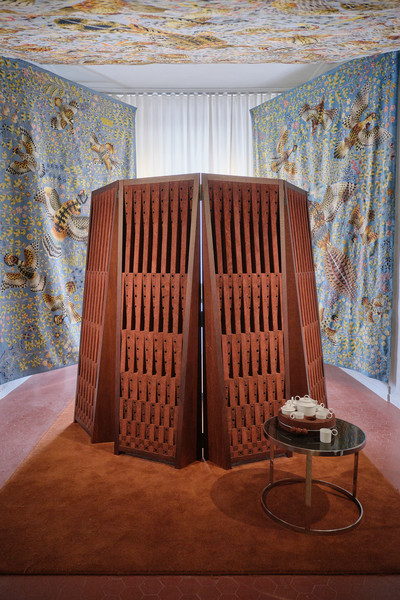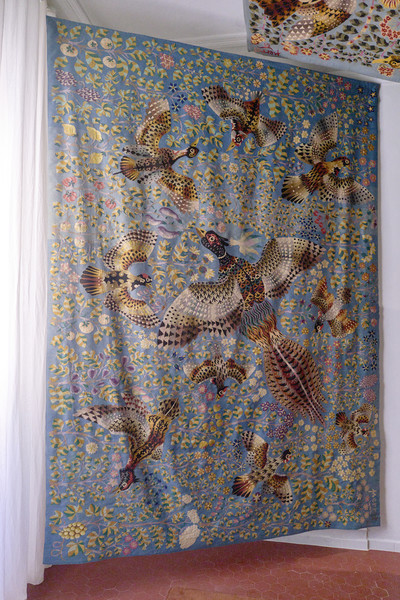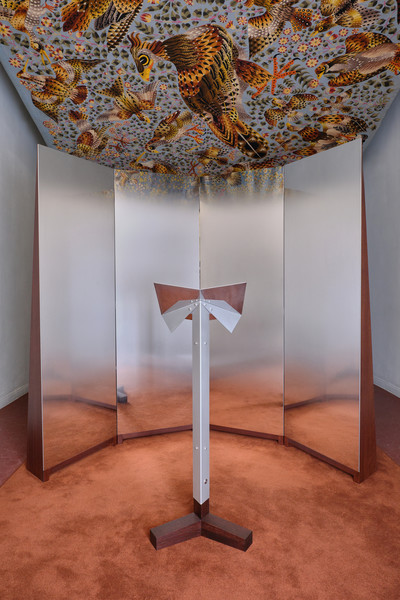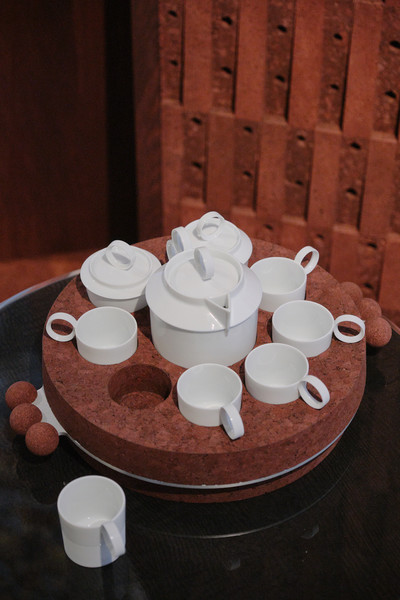Anaïs Fernon, Mobilier National Prize, Sensitive Materials, Public Resonances
Winner of the Mobilier national prize at the Design Parade 2024, Anaïs Fernon has been invited to design a series of pieces for the Atelier de Recherche et de Création (ARC).
She chose to explore cork, a wood that has a relatively low profile in the history of the decorative arts, but whose use today resonates with ecological issues: harvesting it involves maintaining living forests, where the trees are not felled.
Anaïs likes to reveal the sensitive qualities of materials as much as their physical properties – in this case, the thermal (λ = 0.043 W/mK) and absorbent (α ≈ 0.6 in the expanded version) capacities of cork – in order to fit them perfectly into an object or a space.
The time for research is also the time for attention to the supply chains. Natural cork, the product of a manual know-how that is in decline in France, led Anaïs and the ARC to the Junqué family, one of the last cork producers. For the volume of the furniture, the team called on Agglolux, a family business in the Landes region that recycles wine corks into agglomerated cork. The production of these pieces highlights the rare and fragile skills of the living heritage (EPV) companies.
The destination of the furniture is a second area of research. Pieces designed for the Mobilier National are given an inventory number. This makes them inalienable, imprescriptible and unseizable. Which piece deserves to be preserved in this way? This responsibility leads Anaïs to the use of a precise context.
The institutions furnished by the Mobilier National are the stages on which ideas are debated, public policies shaped and democracy played out. What furniture could support this verbal art? A folding screen, designed as a backdrop for the stage, that offers comfort for oral expression. Its smooth stainless steel front carries the spoken word through reverberation, while its cork-relief back absorbs extraneous noise. With the help of acoustician Jean-Paul Lamoureux, the rear volume is designed like a Helmholtz resonator, an arrangement of cavities and narrow necks that filter out the frequencies of the human voice (between 100 and 400 Hz).
In the grand heritage settings of institutions, few acoustic arrangements are possible. This folding screen, halfway between object and microarchitecture, fits in discreetly: its cork face is tinted an institutional reddish brown, while its stainless steel face, from sandblasted to mirror-polished, reflects the environment with nuance. A matching lectern completes the ensemble. For the Design Parade, large tapestries by René Perrot (1912-1979) were brought out of storage and installed at an angle on the walls and ceiling to further enhance sound absorption. The works – Voyage en France n° 1 et n° 2 (1961) and Hommage à John James Audubon (1954) – have a contemporary resonance in this setting.
As a result of the recent merger of the Manufactures nationales, the workshops of the Manufacture de Sèvres opened their doors to Anaïs for a porcelain piece to complement the screen. The idea for a coffee service suitable for institutional meetings was born. The service borrows historic shapes from the Sèvres repertoire: the bodies of the cups come from the Litron service; the handles from craftsman Pascal Cloud have been adjusted. Only the spout required a made-to-measure mould. These shapes, already tried and tested by the craftsmen, ensure smooth production, without the development of new techniques. A protective and insulating cork tray holds the porcelain, keeping the coffee warm for the duration of a meeting. According to tests carried out by physicist Claire Marrache, the cork is sufficient for at least thirty minutes of hot coffee.
The sobriety of the set – tray and porcelain – is due to its simple composition and the alignment of its handles. The service does not need to be set up: it can be moved, set down quickly and used without discomfort. It sits quietly on a corner of the table or accompanies long discussions without getting cold. Behind the screen, the coffee service, housed in its cork case, goes hand in hand with the hushed exchanges that precede all public discourse.
In the 1920s, the cork industry represented 150 companies employing two thousand people. Today, there are just two companies employing around ten people. Derived from an uncut tree, a CO₂ collector, cork is minimally processed and biodegradable; its industry is helping to preserve cork oak forests in the Var and Landes regions.
1 Cork comes from an uncut tree and acts as a CO₂ sensor. It undergoes minimal processing and is biodegradable. The cork industry helps to preserve the cork oak forests in the Var and Landes regions of France.
Harvesting it involves maintaining living forests, where the trees are not felled.
2 In the 1920s, the cork industry comprised 150 companies employing 2,000 people. Today, it comprises two companies employing around ten people.
3 The sandblasted finish is produced by SGM Legrand.
Tapestries on the sides: Voyage en France n° 1 et n° 2 (1961), René Perrot
Ceiling tapestry: Hommage à John James Audubon (1954), René Perrot
Coffee table: Modèle Piano (2010)
Screen, desk, coffee service and tray : Matières sensibles, résonances publiques (2025), Anaïs Fernon
Exhibition produced in partnership with : Les ateliers de la Manufacture de Sèvres
With the support of : Codimat, Pierre Frey, Iguzzini, SFEL, Junqué, Agglolux, Make’s Concept Store




